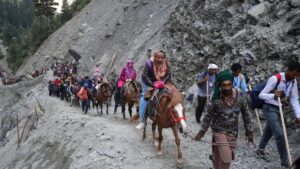Table of Contents
Xenotransplantation
Context
- Richard “Rick” Slayman, the first recipient of a genetically modified pig kidney transplant, passed away two months after the groundbreaking surgery.
- While the cause of death is not linked to the transplant, the case highlights both the potential and challenges of xenotransplantation.
About Xenotransplantation
- As per the US Food and Drug Administration (FDA), xenotransplantation involves transplanting, implanting, or infusing live cells, tissues, or organs from a nonhuman animal into humans, or using human body parts that have been in contact with nonhuman animal parts.
- First attempted in the 1980s for heart transplants due to a shortage of human donor organs. Nearly 90,000 people in the U.S. are waiting for a kidney transplant, with over 3,000 dying annually while on the waitlist.
- Columbia University’s Department of Surgery highlighted its use in treating neurodegenerative disorders and diabetes with animal cells and tissues.
Procedure Details
- Process: The procedure resembles a human kidney transplant but includes crucial steps like genetic modifications to prevent organ rejection.
- Genetic Editing: In Slayman’s case, 69 genomic edits were made using CRISPR-Cas9 technology to eliminate certain pig genes and add human genes to enhance compatibility.
- Post-Surgery: Constant monitoring is required to observe the body’s response to the new organ.
| Why Pigs Are Used? |
|
Complications in Xenotransplantation
- Organ Rejection: Strategies like embedding the pig’s thymus gland with the kidney are used to educate the human immune system and prevent rejection.
- Infection Risks: The FDA warns of potential infections from both known and unknown infectious agents that could affect not just the recipient but also spread to close contacts and the general population.
- Retroviruses: There is a risk of cross-species infection by retroviruses that could remain latent and cause diseases years after the transplant.
Atmosphere Around A Rocky Planet
Context: Researchers using NASA’s James Webb Space Telescope (JSWT) detected atmospheric gases surrounding 55 Cancri e.
| Fact |
|
| What is an Exoplanet? |
| Planets that orbit around other stars are called exoplanets. |
About the Discovery
- Initially discovered in 2004, 55 Cancri e was first thought to be a gas giant similar to Jupiter or Saturn. Further research revealed it to be a rocky exoplanet.
- In 2016, scientists noticed that 55 Cancri e is closer to its star than expected, casting doubts on its classification as a rocky planet. Subsequent studies, however, affirmed its rocky nature.
- The recent observations by JWST suggest that 55 Cancri e has a carbon-based atmosphere, rich in carbon dioxide and possibly carbon monoxide.
- The atmosphere of 55 Cancri e is described as being up to a few percent of the planet’s radius, though more research is needed to determine its exact composition and thickness.
- Implications of Discovery: The discovery has significant implications for understanding atmospheres of Earth-like planets in the solar system and beyond, particularly in how rocky planets can retain atmospheres under various conditions.
Examples, Case Studies and Data
- Accountability and Ethical Governance- Ethics (GS 4): IFS Officer Sanjeev Chaturvedi has transformed a challenging terrain in Uttarakhand’s Haldwani into a thriving research centre for plant conservation.
- Over his nine-year tenure, he has cultivated an ecosystem that now hosts over 850 different plant species, including some classified as ‘threatened’ by the IUCN.
- The research centre sprawls over 25 acres, filled with diverse flora including bamboo, cacti, and fruit trees, and is a sanctuary for various insects and butterflies.
- His work also focuses on conserving endangered plant species and combating illegal trade.
- Notable conservation successes include the Patwa plant, known for its complex root system and soil-binding properties, and the Himalayan Gentian, a plant with medicinal roots that treat liver problems.
- Throughout his career, Chaturvedi has faced numerous challenges, including scepticism and bureaucratic hurdles, yet he remains dedicated to enhancing biodiversity and ensuring the survival of native plant species in their natural habitats. His efforts have led to the propagation of these plants not only in their natural settings but also across the forest wing’s seven research centres.
- International Relation (GS 2): According to GTRI, India’s import of goods from countries with which it has a free trade agreement like the UAE, South Korea, and Australia grew during 2019-24 fiscal years to $187.92 billion.



 Operation Shiva 2025: Indian Army’s Ma...
Operation Shiva 2025: Indian Army’s Ma...
 World Youth Skills Day 2025, Theme, Hist...
World Youth Skills Day 2025, Theme, Hist...
 President Murmu Nominates Four Members t...
President Murmu Nominates Four Members t...





















